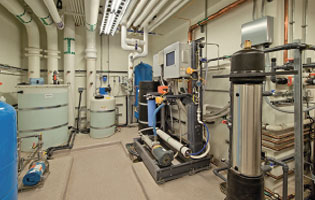PRODUCT INFORMATION
Chemical Terminology Education VII
- front page
- product
- Injection treatment technology
- Technology Development Department
- Chemical Terminology Education VII
Product Information
- heat treatment
-
water treatment
- Arsenic remover
- Desulfurizer
- Deaerator
- Water softener (calcium and magnesium ion removal)
- Carbon filter (removes odor and residual chlorine)
- Sand filter (removal of suspended impurities)
- Iron remover (removal of iron and manganese ions)
- RO water purifier
- Pre-backwash filter
- UV ultraviolet sterilizer
- Ion exchange resin
- reverse osmosis membrane tube
- quick filter
- Various tanks for water treatment
- Various application filter media
- 美國 Clack Clark control valve
- 美國 Fleck Control Valve
- 美國 Pentair Control Valve
- 美國 Autotrol Control Valve
- Runxin Control Valve
- Injection treatment
- Technology Development Department
-
brand
- Demo brand
- US DOW
- IDEX USA
- US CLACK
- EMERSON, USA
- American PENTAIR
- SIEMENS Germany
- American PULSAFEEDER
- Denmark DANFOSS
- Thailand HAYCARB
- France SUNTEC
- UK PUROLITE
- Japanese NOP
- Japan OLYMPIA
- Japan KATSURA
- BRAHMA, Italy
- SAGINOMIYA
- HONEYWELL
- AZBIL (YAMATAKE)
- OLTREMARE
- NIPCON
- TROCHOID
- domestic
- EGO
- KATO
- LECIP
- ATS
- JACOBI
- ETATRON
- WAVE CYBER
- BOSCHINI
- NIPPON
- WL
- CASH ACME
- YAZAKI
- RUNXIN
- About | Contact

Chemical Terminology Education VII
Technical explanation
| Materials Balance: | The effluent dissolved matter in reverse osmosis plus the concentration tax of the output must be equal to the feed water. Since the amount of permeation is a fraction corresponding to the recovery of the influent volume rate, and the volume of the concentrate is a fraction corresponding to the recovery rate, the material balance is calculated according to the equation: Material Balance (RCp + Cc(1-r) ) / Cf |
| Membrane: | Membranes are membranes made of a special material structure designed to provide selective transport of aqueous solutes. In general, the aqueous solute selectivity of a filter membrane is determined by its ability to pass or exclude species depending on their size. Membrane structures can be uniform or asymmetric. The structure of a homogeneous film is uniform in cross-section, at least 100 times magnification. Most homogeneous membranes were developed for microfiltration and hemodialysis. The membrane not only reduces the flow of unwanted solutes, it also reduces the flow of solvents. To minimize the reduction in solvent flux, asymmetric membranes were developed. These membranes are made with an asymmetric cross-section, i.e. composed of two parallel layers. This surface layer is made to resist flow, making the membrane filter selective, and by reducing its thickness, its water permeability is minimized. A thicker support layer provides structural strength and its resistance to flow is minimized due to the open pore structure. These different layers can be made from the same material, such as asymmetric cellulose acetate membranes, or from different materials, such as thin-film composite membranes. Finally, membranes used in water treatment equipment are typically manufactured in two forms, (1) membrane tubes and (2) hollow fibers. |
| Milligrams equivalent per liter (meq/l): | It is calculated by dividing mg/l by the equivalent weight of the ion. |
| Milliliters per liter (mg/l): | Equivalent to parts per million (ppm). |
| Methyl Orange: | See "Alkalinity". |
| MHO: | Conductivity unit. See "Conductivity". |
| MICRO-MHO: | One Mho in a million. |
| Siemens (Micro-Siemens): | Another term is micro-mho, which is a unit of electrical conductivity. |
| Non-Carbonated Hardness: | See "Hardness". |










